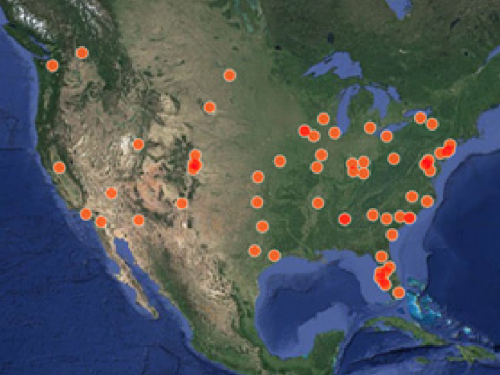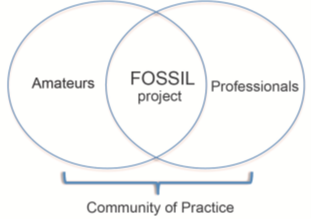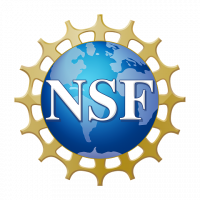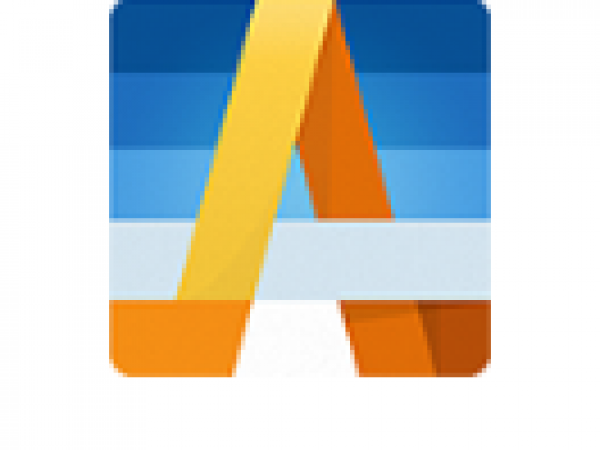Welcome!
As of June 20, 2025, the myfossil.org site has been sunsetted. Users of that site are now automatically redirected here. For more information, please see the section below on the “Sunsetting of myfossil.org”.
The FOSSIL Project—The Big Picture
Throughout the U.S., more than 60 fossil clubs and paleontological societies conduct a variety of activities that promote the science of paleontology. These include organizing meetings, hosting speakers, organizing festivals, running field trips, conducting outreach—particularly in K-12 education, working with scientists, building their own personal collections, and often donating scientifically important specimens to museums.
Unlike many other science hobbyist groups, fossil clubs and paleontological societies have not typically enjoyed the benefits of a national network, such as those of birdwatchers and amateur astronomers. To facilitate networking among fossil enthusiasts in the U.S., through the FOSSIL Project, the Florida Museum developed a networked community of fossil clubs, paleontological societies, and professional paleontologists.

This effort—called FOSSIL (Fostering Opportunities for Synergistic STEM with Informal Learners)—was supported by funds from the National Science Foundation. More than 30 fossil clubs and paleontological societies expressed interest in participating in FOSSIL, as did an initial cohort of professional paleontologists.
In 2014, the FOSSIL team at the Florida Museum met with representatives of a number of these clubs and societies to determine priorities for the development of FOSSIL. Those discussions combined with results from a national survey conducted in 2012 revealed interest in improving communication between clubs/societies, creating training and development events, enabling attendance at professional meetings and workshops, conducting K-12 outreach to underserved audiences, having online access to the growing digitized collections of natural history museums, and creating and providing a forum for sharing personal digitized fossil collections.
As our FOSSIL project began, we received survey data back from about 30 of the 60 known fossil groups (variously called “clubs” or “societies”) in the U.S. We asked them to use words to characterize their groups. The results are shown in the word cloud below:

The broader community of amateur (also termed “avocational”) and professional paleontologists ultimately determined the scope of FOSSIL activities, tools, and resources, collaborating in their development and implementation. The inaugural meeting of FOSSIL took place in conjunction with the 10th North American Paleontological Convention at the University of Florida in Gainesville, Florida, in February of 2014.
Project Goals and Objectives
Funded by the National Science Foundation, the FOSSIL project conducted learning research to better understand how (1) to develop a national network of organized fossil clubs and (2) professional paleontologists and amateur fossil enthusiasts could more effectively work and learn together. The learning theory behind this project stems from the concept of a “community of practice,” in which people come together to learn and share their knowledge about a topic or domain of common interest, in this case collecting fossils and the science of paleontology.

As our project developed, it became very clear that the aspect of personal socialization among participants was of great importance and value to them. Recognizing this fact, we coined the term “social paleontology” to describe the mode of learning exchange among clubs and their individual members. We likewise focused our research to better understand this process of social paleontology.
Initially we intended to use e-newsletters, in-person meetings, and field trips to facilitate this networked community of practice. It was soon realized, however, that in order for this network to be more successful, we also needed a website (myfossil.org), social media (Facebook @TheFossilProject, Twitter @projectFOSSIL, YouTube @FOSSILproject, Instagram @thefossilproject), and ultimately, a FOSSIL mobile application (the myFOSSIL app). The website and mobile app were developed in partnership with local Gainesville development company Atmosphere Apps.
Sunsetting of myfossil.org
With the completion of the support role of myfossil.org for the SharkAI project in mid-2025, our social media accounts and app listed above were deactivated. On June 20, 2025, the myFOSSIL website was sunsetted. These steps primarily resulted from declining resources and participation in the original goals of the FOSSIL project.
Thus, this current website was developed, de novo, in 2025 to provide a history and archive of the resources that were primarily developed during the FOSSIL project. It presents a history, archive, and resources related to the original FOSSIL project, particularly during its active phase between ca. 2011 and 2019.
By the numbers: accomplishments, deliverables, and outcomes of the FOSSIL Project
- >25,000 registered users of the original myfossil website and app between 2014 and 2025.
- 1058 research-grade fossils uploaded by the myfossil community to our eMuseum, then aggregated by iDigBio and GBIF.
- 1,000s of school children in the U.S. were beneficiaries of their teachers’ participation in the myfossil community.
- 1,000s of fossils donated to schools for teaching and learning.
- 100s of fossils collected by amateurs that were used, and/or donated to museums, for paleontological research.
- >50 teachers participated in the FOSSIL and related projects.
- 50 talks presented at professional meetings disseminating results of the FOSSIL project (see FOSSIL Project Resources tab).
- 11 professional papers published in peer-reviewed professional journals and one book (see FOSSIL Project Resources tab).
- 10 early career professionals, including graduate students and postdoctoral fellows, received advanced degrees and/or advanced their careers as part of the FOSSIL project.
********************
The FOSSIL project was supported by the National Science Foundation (Division of Research on Learning) grants 1322725 and Supplement 1748347.


